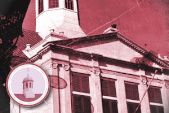IV.2 Laws, Regulations and Rebellions

ANRI preserves 161 volumes of collected public decrees posted by different institutions. Large parts of this collection were published in seventeen volumes by the Batavian Society for the Arts and Sciences (Bataviaasch Genootschap voor Kunsten en Wetenschappen) between 1885 – 1900. Although many public decrees issued concern the city of Batavia, a large number were also intended to be posted in other VOC settlements.
A selection of public decrees reveals how a colonial local government formulated laws to control an Asian population. These documents also show how colonial attitudes and mindsets are reflected in the promulgation of such laws. Also, public decrees (apart from their original purpose) offer information about Asian social life in a colonial context.
Despite this intensive level of urban political and religious governance, public order disturbances, even large-scale rebellions, sometimes erupted. Half the population consisted of slaves of different origins. It took little incentive for the slave population and a poor underclass of freed Asians and Chinese immigrants to run amuck, not to mention drunken soldiers and sailors on sprees or self-proclaimed leaders such like “Kapitan” (Captain) Jonker. Various military civil guards patrolled the streets by day and by night. A large-scale Chinese revolt in 1740 led to widespread bloodshed. A report by a military captain shows how fiercely the Chinese sugar labourers rebelled in Tangerang, west of the city.




